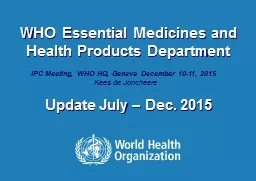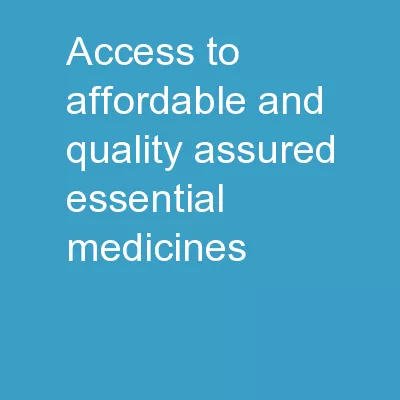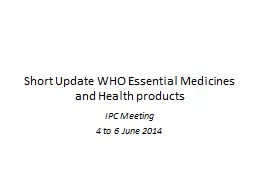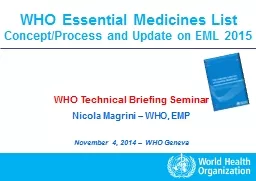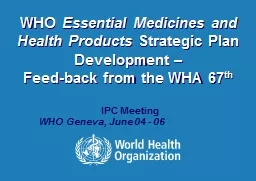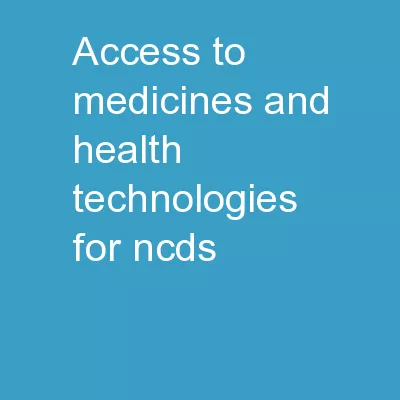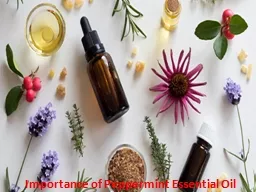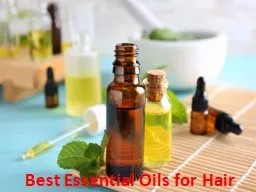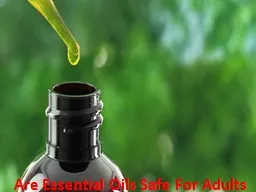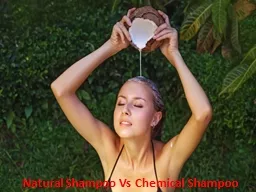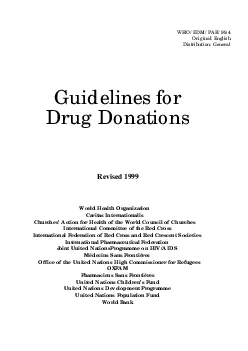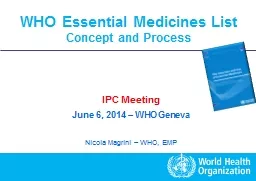PPT-WHO Essential Medicines and Health Products Department
Author : mitsue-stanley | Published Date : 2018-09-16
Update July Dec 2015 IPC Meeting WHO HQ Geneva December 1011 2015 Kees de Joncheere EML 2015 Full report available 586 pages 1082 references http appswhointirisbitstream1066518976319789241209946engpdfua1
Presentation Embed Code
Download Presentation
Download Presentation The PPT/PDF document "WHO Essential Medicines and Health Produ..." is the property of its rightful owner. Permission is granted to download and print the materials on this website for personal, non-commercial use only, and to display it on your personal computer provided you do not modify the materials and that you retain all copyright notices contained in the materials. By downloading content from our website, you accept the terms of this agreement.
WHO Essential Medicines and Health Products Department: Transcript
Download Rules Of Document
"WHO Essential Medicines and Health Products Department"The content belongs to its owner. You may download and print it for personal use, without modification, and keep all copyright notices. By downloading, you agree to these terms.
Related Documents

